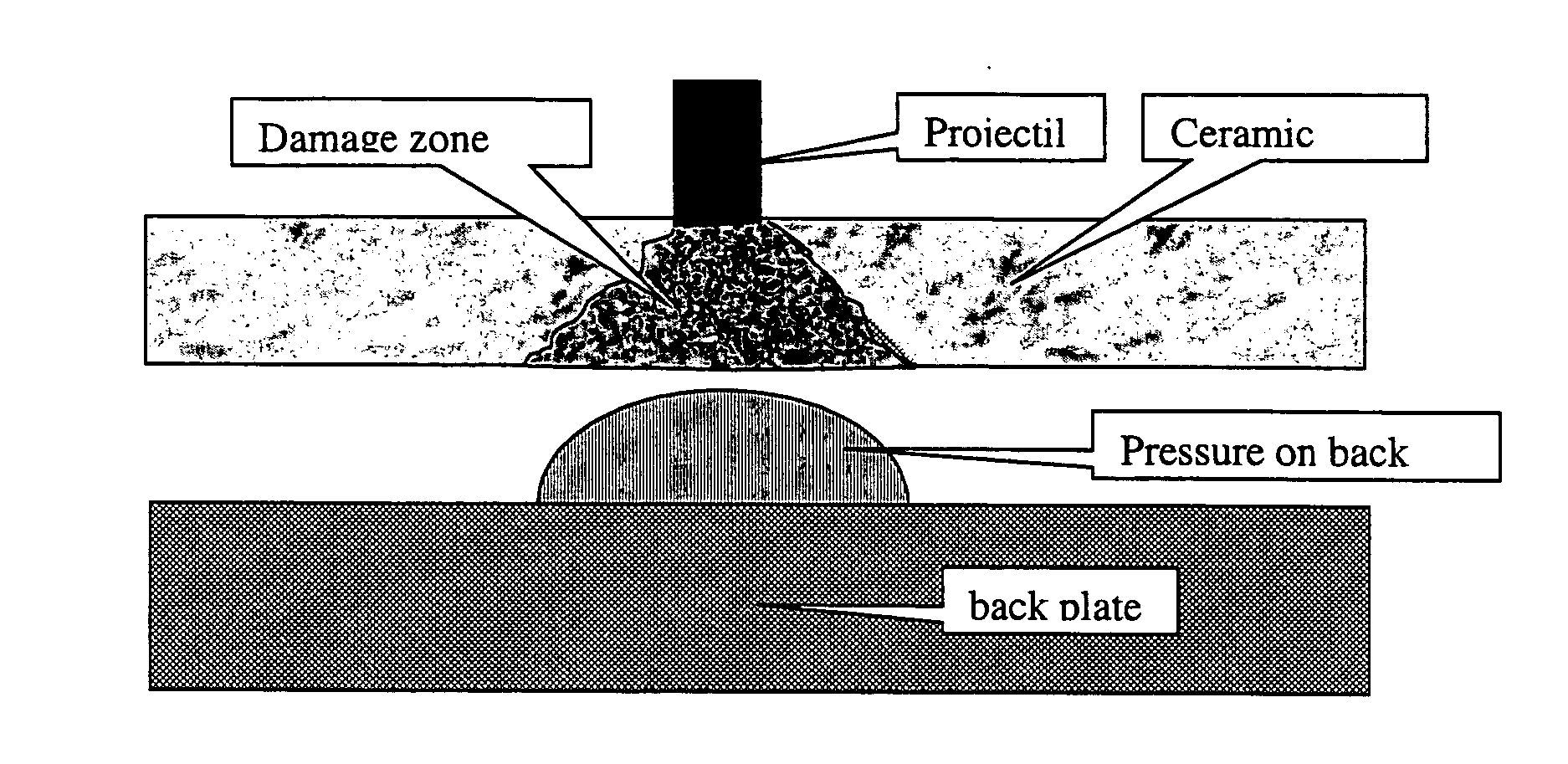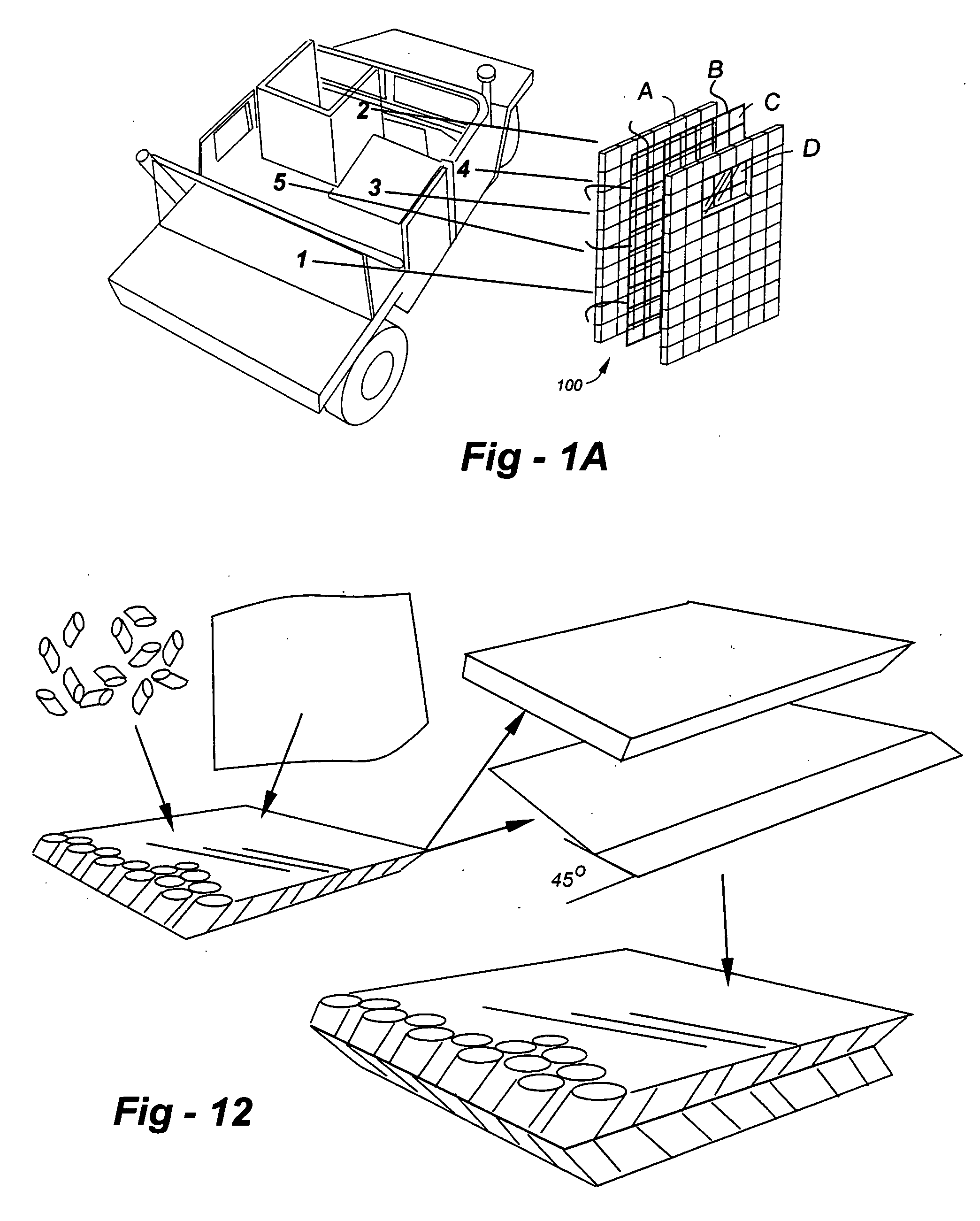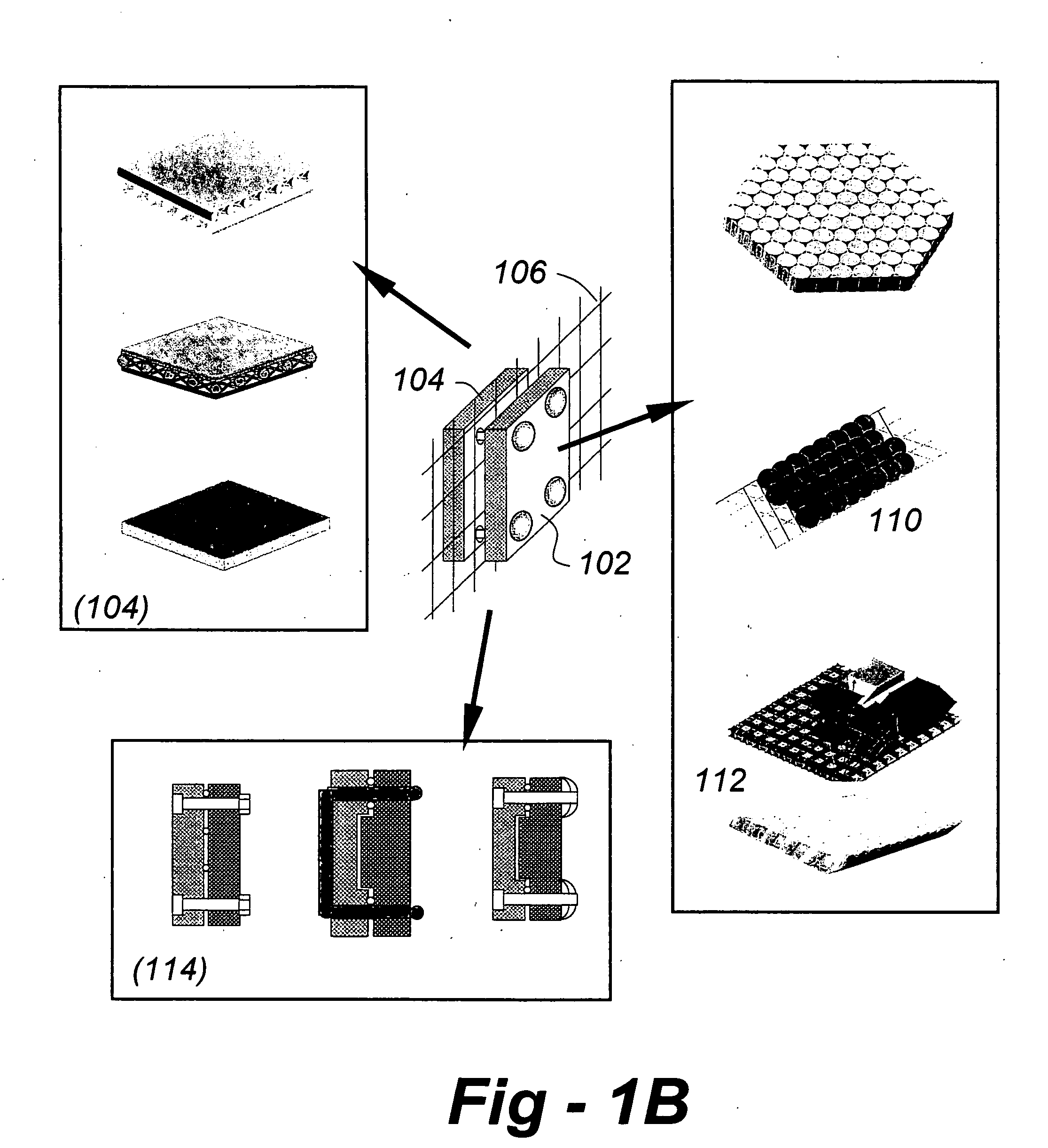Lightweight composite armor
- Summary
- Abstract
- Description
- Claims
- Application Information
AI Technical Summary
Benefits of technology
Problems solved by technology
Method used
Image
Examples
Embodiment Construction
[0034] Basic armor configuration 100 according to the invention is illustrated in FIG. 1A. FIG. 1B shows different construction alternatives. Each include three major modules: 1) a functionally oriented material (FCM) tile 102 as the front plate, 2) a Bio-mimetic Tendon-Reinforced BTR back plate 104, and 3) supporting structure 106 using a fabric web. Various alternative embodiments are available in each case. As described in further detail below, the front plate may use pellets arranged in a regular structure (110), of the pellets may use a designed shape (112). The back plate may be constructed using any of the forms disclosed in co-pending U.S. patent application Ser. No. 11 / 023,923, the entire content of which is incorporated herein by reference. The front and back plates may be joined with a clip mechanism (114), or other disclosed alternatives may be used. In the preferred embodiment, the front and back plates are co-extensive, and arranged in an array shown at 100 facilitatin...
PUM
 Login to View More
Login to View More Abstract
Description
Claims
Application Information
 Login to View More
Login to View More - R&D
- Intellectual Property
- Life Sciences
- Materials
- Tech Scout
- Unparalleled Data Quality
- Higher Quality Content
- 60% Fewer Hallucinations
Browse by: Latest US Patents, China's latest patents, Technical Efficacy Thesaurus, Application Domain, Technology Topic, Popular Technical Reports.
© 2025 PatSnap. All rights reserved.Legal|Privacy policy|Modern Slavery Act Transparency Statement|Sitemap|About US| Contact US: help@patsnap.com



